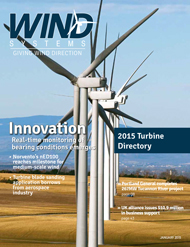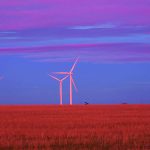The U.S. Department of Energy has released for public review and comment the Draft Environmental Impact Statement (EIS) for the proposed Plains & Eastern Clean Line transmission line project. The Draft EIS describes the project, its purpose, and assesses its potential environmental impacts. Clean Line Energy (Clean Line) is developing the Plains & Eastern Clean Line, an approximately 700-mile overhead high voltage direct current (HVDC) transmission line and associated facilities capable of delivering more than 3,500 megawatts (MW) from renewable energy generation facilities in the Oklahoma Panhandle region to customers in Arkansas, Tennessee, and other areas in the Mid-South and Southeast. The proposed project includes converter stations at the endpoints of the HVDC line near Guymon, Oklahoma and Memphis, Tennessee. In addition, an intermediate delivery converter station that would have the capacity to deliver up to 500 MW of power has been proposed in central Arkansas. The Draft EIS identifies the proposed location of the direct current transmission line and other project facilities, and provides analysis of the potential environmental effects at these locations as well as alternatives. DOE is accepting public comments on the Draft EIS and will hold public meetings in January and February of 2015.
“The release of the Draft EIS marks an enormous step for the Plains & Eastern Clean Line project. After a multi-year process that involved input from thousands of stakeholders and a tremendous amount of analysis and thought, we are very pleased with the quality and depth of the information presented in the Draft EIS,” said Michael Skelly, President of Clean Line Energy. “We appreciate DOE’s consideration and independent review of the Plains & Eastern Clean Line and encourage stakeholders to continue to participate in the environmental review process.”
Prior to making a determination whether to participate in the proposed project, DOE, in consultation with the Southwestern Power Administration, must complete its evaluation of the proposed project, including reviewing the potential environmental impacts pursuant to the National Environmental Policy Act (NEPA). Other federal agencies, including the U.S. Fish and Wildlife Service, the U.S. Army Corps of Engineers, and the Tennessee Valley Authority, are cooperating with DOE in the NEPA review. The project is not seeking federal funding.
Clean Line developed the proposed route for the direct current transmission line using a multi-step process that minimizes adverse impacts. Routing for the Plains & Eastern Clean Line involved an extensive review of existing conditions including the locations of homes and businesses, as well as cultural, historical and environmental resources. Clean Line adopted guidelines and criteria consistent with best practices for transmission line siting. Over the past several years, Clean Line received input regarding routes and other project locations from thousands of stakeholders, including landowners, local leaders, agencies, and conservation organizations in Arkansas, Oklahoma and Tennessee.
“We are pleased that the review process for the Plains & Eastern Clean Line project has passed this crucial stage so that Arkansas and other southeastern states are one step closer to having greater access to low-cost wind energy,” said Steve Patterson, Executive Director of Arkansas Advanced Energy Association. “We look forward to the continued progress of the environmental review process and appreciate the diligence involved with siting this project carefully and thoroughly.”
DOE will not make a decision regarding the project until it has completed the environmental review process. The release of the Draft EIS initiates a 90-day public comment period that is scheduled to conclude in March 2015. DOE will host 15 public meetings in Oklahoma, Arkansas, Tennessee, and Texas during January and February of 2015. Based on the current schedule, Clean Line anticipates that DOE would issue a Final EIS later in 2015, which will consider and respond to comments received regarding the Draft EIS. Clean Line expects DOE to identify a preferred route in the Final EIS.
Public input is a key component of the NEPA review process. Interested parties can learn more about the NEPA review process, view a copy of the Draft EIS, and learn how to participate in DOE’s comment process by visiting DOE’s Plains & Eastern EIS website at
www.PlainsAndEasternEIS.com.



































